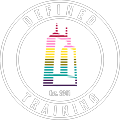Paleo 30 Day Challenge Starting next Monday, September 16th, 2013. Join our PALEO FORUM to register for the challenge! Recipes, motivation, quotes, photos, accountability and more. Joining our Facebook Forum does not register you for the workshop.
Paleo Q & A workshop: In order to attend our Paleo workshop you need to register on our website and/or click here! Anybody interested in learning more about the Paleo challenge, hear from all of our coaches on their personal experiences with the lifestyle as well as asking any and all questions regarding the challenge; please register.
After registering: download the packet of information, read it this week, and bring all your questions to the Q & A we are hosting at our Lincoln Square facility! Saturday: Noon-1:30pm
Endurance: **NEW LOCATION!**Endurance will meet Tuesday at the Barry and Lakeshore Drive location (Running Path)at 7:00 p.m. We’re going slightly longer so we’re hitting the crushed-gravel path. Workout will be ALWAYS be scaled for anyone new to endurance.
NOTE: Please check Facebook or the CFD website for any weather related updates. We will try to post cancellations by 4:00p.m.Questions? Text Coach Mark at 708-267-8234.
7pm Mobility Class: (Lakeview facility) Focus on Posterior Chain, glutes and hamstrings! Release your backside, increase your deadlift!
**Lincoln Square athletes are welcome to attend either our Mobility class at Lakeview or our outdoor Endurance Class. Details above.
A1. Take 20 minutes-
Bulgarian Split Squat:
Beginner: Sets of 10 per leg, bodyweight or PVC.
Intermediate: Sets of 8 per leg, using KB or DB in hands, add weight.
Advanced: Find your heavy 5 per leg with back rack barbell, add weight, get heavy, move right!
Compare efforts to 7.23.13
Single Leg Strength explained – a basic definition is an athletes ability to produce balance, coordination, power, and strength while balancing on one leg.
Your single leg strength doesn’t get tested in a double leg movement like the squat. In fact many athletes with imbalances in strength from left to right can go for years without realizing it if they do not ever train single leg movements. Having balance between your legs and hips is essential to preventing injury. If you have imbalances and you are struggling to see improvement in your double leg strength it is possible that the imbalance is holding you back. Single leg strength is also very important for running since every stride you take is a single leg effort.
So in conclusion, here are SOME of the benefits of the Bulgarian Split Squat
- Helps determine if there is an imbalance between one leg and the other.
- Helps improve athletic (and life) performance – there aren’t many sports we play or things we do in everyday life that don’t require us to stand, run, leap, walk, jump, etc on one leg.
- Helps improve hip stability and function. Single leg training targets what’s known as the lateral sub-system (glute medius & adductor complex on one leg, and the quadratus lumborum on the opposite leg).
- Makes people of the opposite/same sex want to hang out with you. 🙂
- Helps improve single-leg strength, which in turn, almost always translates to increased strength in the bigger, more common lifts like squats and deadlifts.
- Helps reduce axial loading and gives the spine a bit of a break from the grind of constantly lifting heavy stuff.
Furthermore, single leg training helps to fix or alleviate many of the issues that cause chronic knee, lower back, and hip pain.
A2. Gymnastic accessory work-
Ring Support holds: 5 Sets: 30-60 second holds.
Perform a set of holds in between your rest sets with the BSS.
Ring Support Holds Explained:
The simplest description of a support is to hold your body above the rings with straight arms. Most people’s first experience with ring training is entering the support position and shaking like a madman. This brings up a common misconception about the rings: that they are unstable. However, the rings have a fixed point of equilibrium. Push the rings and they will always, eventually, come back to where they started. So, if the instability you feel doesn’t come from the rings, where does it come from?
Your brain and central nervous system. Your brain is sending a signal to your arms to hold the rings still. Noise within the signal, like static on the radio, is what causes the shakes. As your signal to noise ratio improves, so does the stability of your support. The performance benefit here is that you are teaching your body to apply force more productively. Ring training is very effective at inducing this noise because the rings move in frictionless plane. The slightest change in muscular tension will cause movement in the rings because there is no friction to hold them in place.
There are four main things to look for in a proper support.
- Straight arms. There are no variations to this. A slight bend is not straight.
- Shoulders should be pushed down and chest up. Shoulders should not be drifting up toward your ears. You want to be actively pushing down on the rings at all times.
- Try to keep your arms off the straps and off your body as well. If you lock your arms against your sides, you are limiting the potential for movement, so you want to minimize contact between your lats and your arms.
- Lastly, you will also want to turn the rings out to about 30 to 45 degrees. Having the rings parallel is technically correct, but a support with rings turned out is more “mature.”
C. “Tabata Something Else”
20 seconds on/ 10 seconds off for 8 Rounds at each station.
Pullups
Pushups
Situps
Airsquats
*Recording your lowest round from each station
**Compare scores to 7.2.13
-Rest 1 minute between each station.

